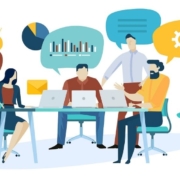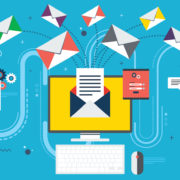Senior Living Sales Tips: The Problem with Third-Party Leads
Many senior living sales teams have become dependent on third-party lead aggregators to generate leads, tours, and move-ins. On the surface, a lead-gen aggregator sounds super appealing. You get more leads without lifting a finger, right? But as the saying goes, if it sounds too good to be true, it probably is.
In today’s edition of senior living sales tips, we’re going to discuss the many problems with third-party leads (including how you should approach them if you’ve decided you simply can’t give them up).
1. All third-party leads are SHARED leads.
Unfortunately, it’s easy for senior living sales teams to buy into the illusion that they have plenty of leads if they’re only looking at the total number rather than the quality or the lead source itself.
Keep in mind, however, that lead aggregators aren’t sharing leads with just your community. They’re sharing the leads with five to seven other communities as well. Not to mention, a shared lead actually represents only 1/5 or 1/7 of an organic or exclusive lead. So you can’t consider any shared leads as “full” leads since doing so will artificially inflate your lead database or senior living CRM.
2. Third-party lead generators might provide a high volume of leads, but these leads typically have extremely low conversions.
It is not unusual for communities to attribute 80% of their total leads to third-party sources but only convert three to six percent of those leads to residents.
Think about that for a moment.
Your senior living sales team is spending eighty percent of its time working on leads that convert only three to six percent of the time! Organic leads, professional referrals, and friend and family referral sources all have significantly higher conversions.
3. Being first is the only one way to improve conversions (and that isn’t as easy as it sounds).
By “first,” we mean contacting the lead within 10 minutes of receiving it—and doing this on a regular basis day in and day out with all leads that come in. Talk about adding stress to your sales team!
And even if you are first, that might not get you very far since most marketing leads aren’t sales-ready until after six to eight marketing interactions.
4. You might already have the same lead in your CRM.
The lead the third-party aggregator provided might already exist in your senior living CRM because it came in another way, such as organic search or paid advertising.
And yet if you don’t promptly notify the third-party provider about the duplicate lead, you’ll end up “buying” a lead for a prospect you already have. Talk about a waste of valuable marketing dollars for your senior living sales team.
5. Third-party leads are expensive.
Most communities are paying the equivalent of one full month’s rent and care for third-party leads. Couldn’t you put that money to better use with marketing initiatives that bring in organic leads who are genuinely interested in your community? (Short answer: YES!)
Not ready to give up third-party lead aggregators just yet? At least be SMART about it.
If you’re going to continue with third-party lead aggregators, you need a smart strategy to convert leads faster using marketing automation technology. Luckily for you, we’ve created a solution that can help.
We call it “Speed to The Lead.” This solution will help your community respond quickly to third-party leads, deliver brochures immediately, and follow-up using an automated five-step lead nurturing workflow that nudges people along the sales funnel and encourages them to request a tour. Interested in hearing more about it? Get in touch and let’s chat!



